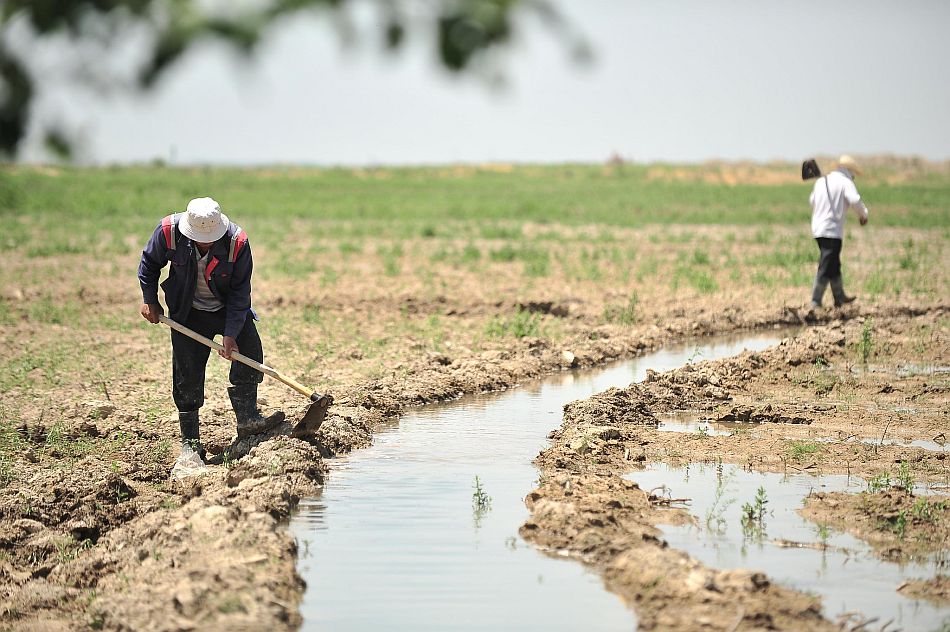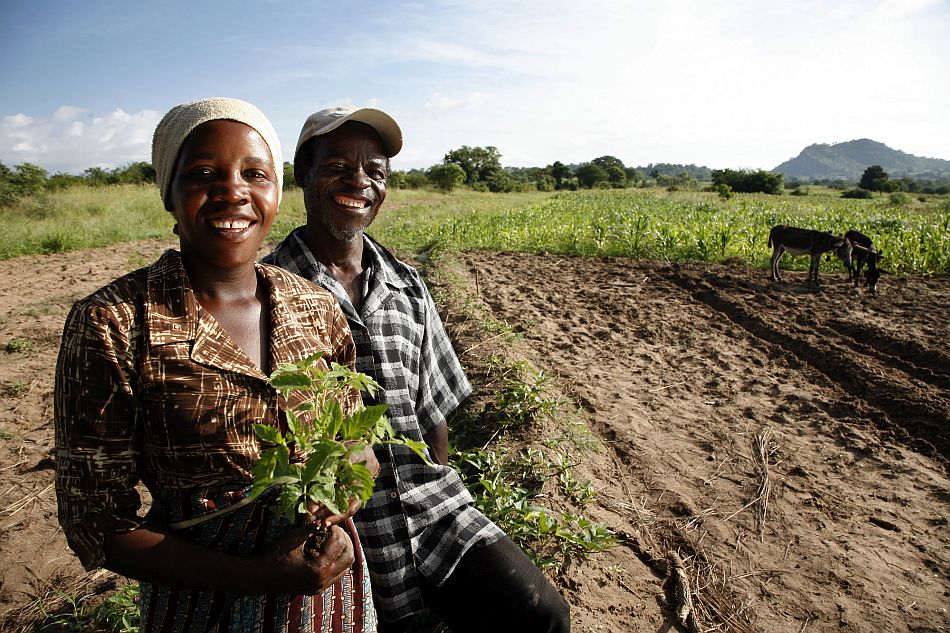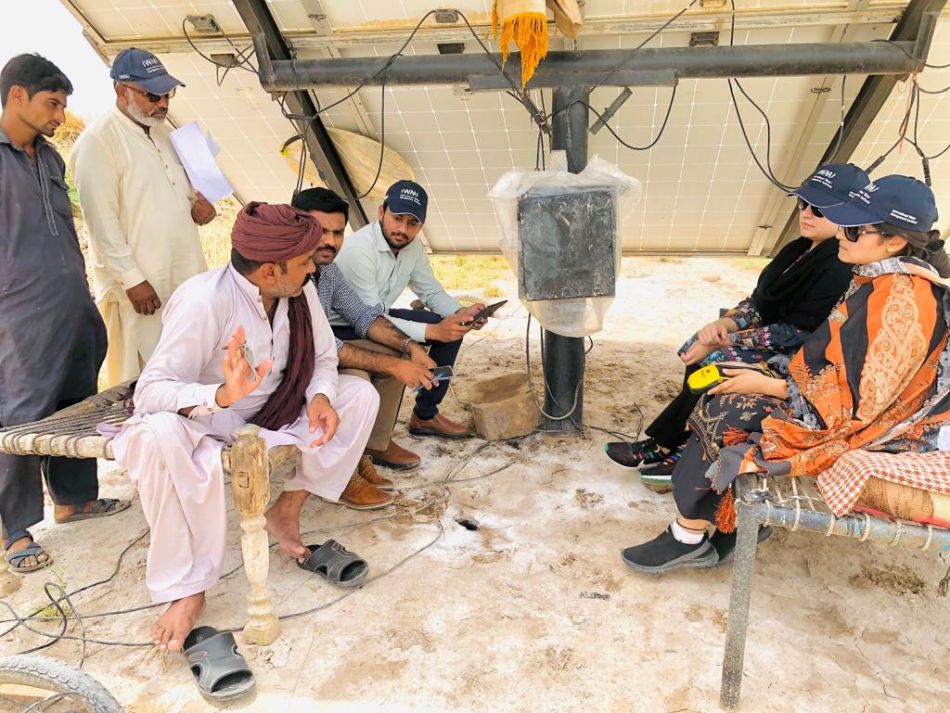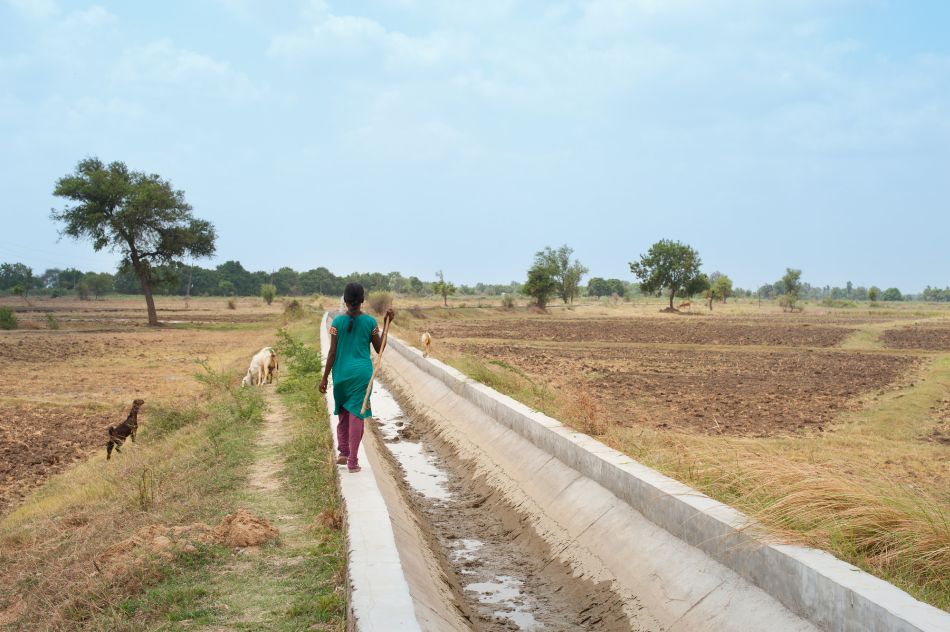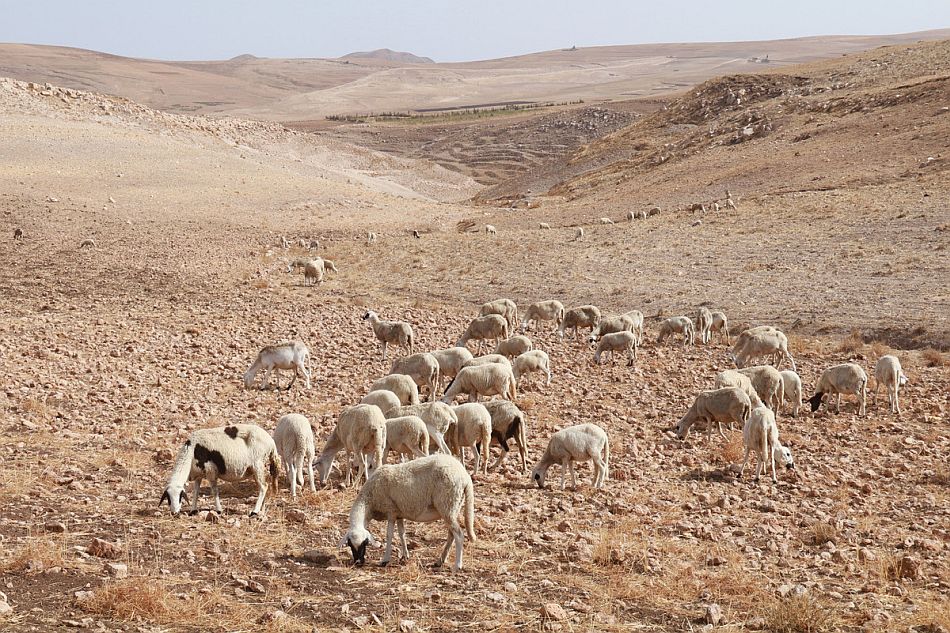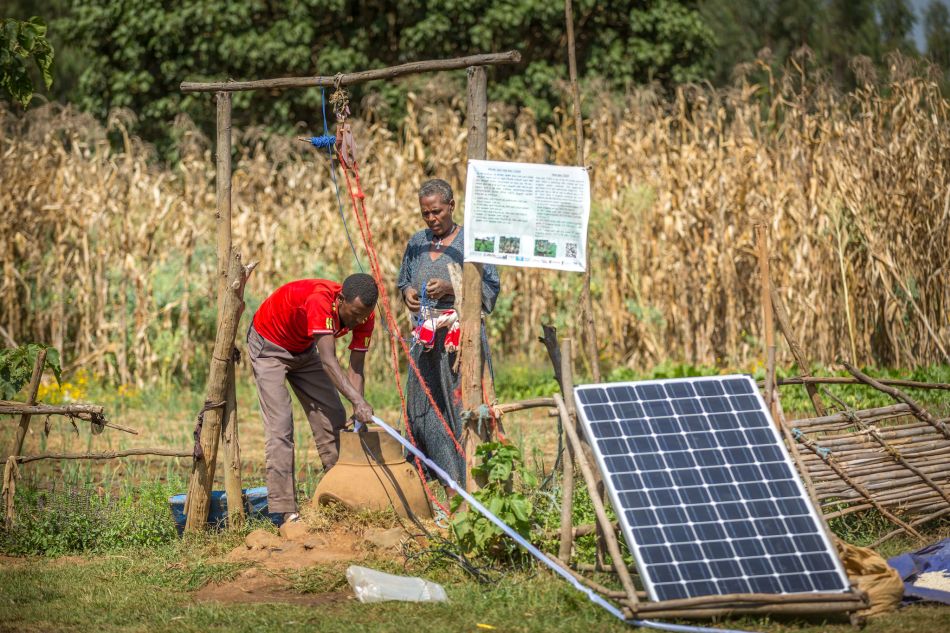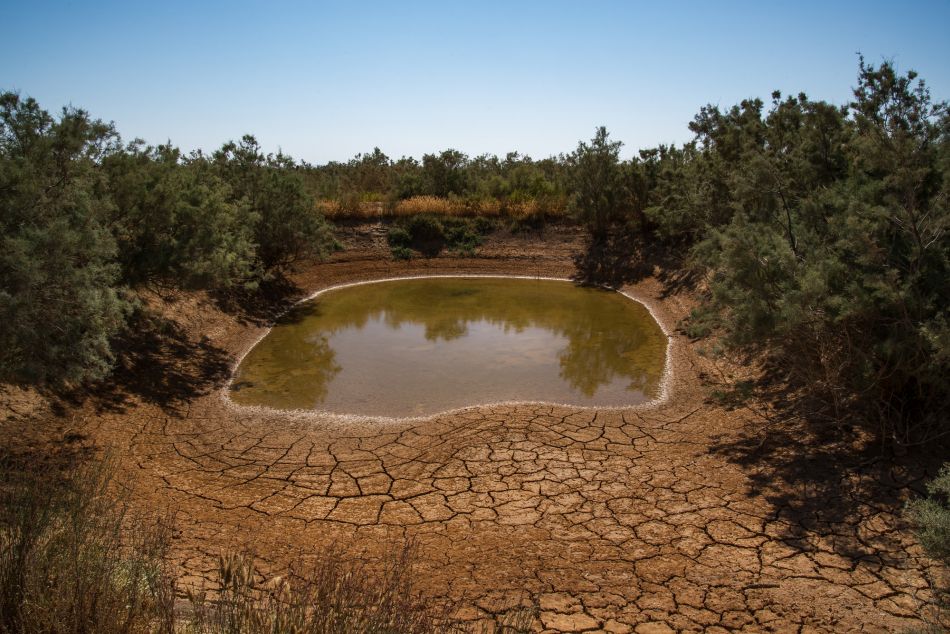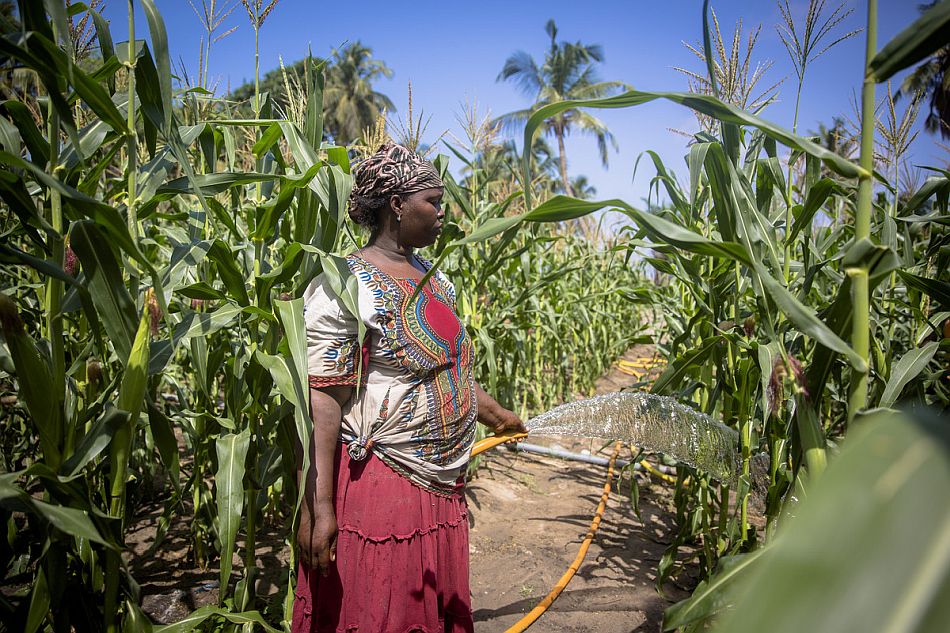By Russell Sticklor, Senior Communications Coordinator
After two weeks of robust engagement in Glasgow, IWMI and partners stand ready to meet the world’s urgent and growing demand for water-based climate solutions.
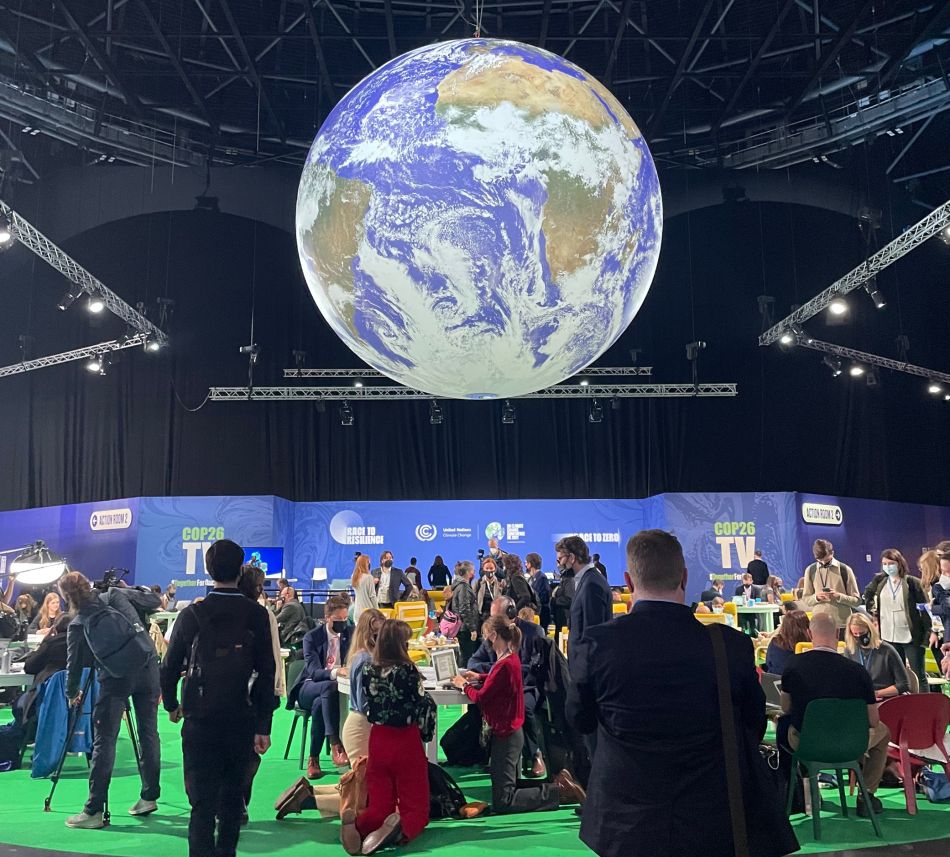
It was here, and then it was gone.
Just like that, COP26 came and went in a flash: After a one-year delay due to the ongoing COVID-19 pandemic, the highly anticipated Glasgow climate summit closed its doors earlier this month after a dramatic and sometimes bitterly contested fortnight of negotiations.
But what did the Glasgow talks accomplish in the end? What happened beyond the talks? What does our collective path toward greater climate resilience now look like, and how can water help us get there?
In a way, the conference delivered optimism and disappointment in equal measure. On one hand, the Glasgow talks did not secure the desperately-needed national-level commitments to rapidly accelerate reductions in greenhouse gas emissions, nor did developed countries step up with guaranteed funding to compensate heavily impacted countries for climate-related “loss and damage.” And while the goal of limiting global warming to 1.5 degrees Celsius above pre-industrial levels may still be technically alive post-Glasgow, it is a goal on life support: Too many countries heavily reliant on fossil fuels remain steadfast in their refusal to commit to emissions cuts large enough to help guard against further overheating of the planet.
COP26 wasn’t all doom and gloom, however. A rosier, glass-half-full view of the summit reveals several milestone accomplishments offering glimmers of hope as we come to terms with the scope and gravity of our unfolding climate emergency. For the first time ever, for example, fossil fuels have been directly implicated as a driving force behind the climate crisis, with the Glasgow Climate Pact emphasizing the need for countries to urgently drawdown their use of heavy-polluting coal in particular. And with more than 100 countries pledging to end deforestation by decade’s end in a pact encompassing roughly 85 percent of the world’s forests — signaling a strong commitment to preserving woodland ecosystems vital to healthy watersheds — we can all breathe a bit easier.
At long last, water gains its seat at the table
Thanks in large part to the dynamic and active Water and Climate Water Pavilion, which was brought to fruition through the partnership of 32 water organizations, COP26 also made clear that water, for too long downplayed or ignored entirely at past climate summits, has “arrived.” From the pages of the sobering climate report released by the United Nations Intergovernmental Panel on Climate Change (IPCC) earlier this year to the halls of the COP26 Blue Zone, water is seemingly everywhere these days, attracting long overdue recognition of its central role in both understanding and tackling our escalating climate crisis.
“It’s all about water,” emphasized IWMI Director General Mark Smith while in Glasgow. “The agenda that we work on at IWMI, the interest in it, and the demand for it, is only growing.”
Throughout COP26 IWMI further solidified its reputation as a global leader in identifying, refining, and implementing innovative and scalable water-driven solutions for strengthening climate adaptation, mitigation, and resilience. IWMI served as a core partner of the first-ever COP Water and Climate Pavilion, which hosted some 100 in-person, virtual, and hybrid events from a central location in the COP26 Blue Zone. As part of our robust involvement with the Pavilion, IWMI curated sessions corresponding with many different themed days throughout the conference — including a full slate of events during the Pavilion’s Food and Agriculture Day (November 9) — and co-hosted three days’ worth of sessions via a virtual Asia Water Hub in coordination with the Asian Development Bank and U.N. Sri Lanka.
In total, IWMI experts were involved in more than 40 events at the Water and Climate Pavilion and other COP26 venues, engaging audiences as speakers, panelists, or moderators and helping ensure IWMI’s thought leadership and expertise contributed to the debates throughout the conference. The challenge facing vulnerable communities contending with severe droughts and floods proved to be a particularly frequent area of discussion among COP26 delegates, and IWMI helped shape and inform these conversations by sharing evidence and experiences from communities around the world where IWMI is active. (If you missed any of these fantastic water sessions at COP26, you are in luck — every single day of programming is archived and freely accessible on YouTube via the Water and Climate Pavilion homepage).
Through these many events and other engagements in and around Glasgow, the message IWMI delivered to negotiators, policymakers, partners, civil society representatives, development practitioners, and other key audiences bears repeating here: Transforming water systems to strengthen water and food security is central to climate action and must serve as the foundation for a climate-resilient future.
“We need an urgent and radical rethink on water,” Mark Smith reminded us in the final days of COP26. “In a future defined by a climate-altered water cycle, the world needs more fluid, decentralized, and innovative water management and cannot rely on what has worked in the past.”
But most importantly?
“We must be big and bold — and fast.”
Water surfaces as a potent climate solution
Throughout COP26, IWMI emphasized that water solutions are climate solutions, and that our understanding of water’s relationship to climate must evolve, and quickly. Why? Because historically, the climate community has too often viewed water as a sector, rather than as a resource that uniquely connects all aspects of climate adaptation, mitigation, and resilience.
To overcome such biases, IWMI’s research seeks to contextualize water not just as a driver of climate-related shocks and stresses such as droughts and floods, but also as a potent source of scalable climate solutions with valuable spillover effects in other areas of society. For example, greater water security empowers communities to more effectively navigate intensified cycles of flooding and drought, strengthening economic resilience in the process. At the same time, more sustainable water management practices help reduce poverty, promote gender equality, and ensure that youth have a greater voice when it comes to water decision-making in their communities.
IWMI also recognizes that water is a crucial component of effective climate adaptation. It is no exaggeration to say that what energy is to mitigation, water is to adaptation. More efficient water management, use, and storage must be at the center of any efforts to achieve durable, scalable, and successful climate adaptation. And broader recognition of water’s ability to strengthen climate adaptation efforts is vital if we are to encourage greater uptake of water-based climate solutions among farmers, households, communities, governments, and the private sector.
Last but certainly not least, water plays an important role in certain aspects of climate mitigation as well, thanks to innovative and environmentally friendly practices such as solar-powered irrigation. While water’s broader contributions to mitigation efforts are often overlooked, it is important to remember that safeguarding vulnerable ecosystems (and the water resources they protect) is a key aspect of climate mitigation, given that wetlands and peatlands function as natural carbon sinks that also improve water quality, facilitate aquifer recharge, and — by absorbing floodwater — limit damage related to extreme weather events. Throughout COP26, negotiations highlighted nature-based climate solutions as a key element of both mitigation and adaptation efforts, but there remains a pressing need to provide further evidence to help shape policy discussions around nature-based solutions. In the coming months and years, it will be important to substantiate and quantify the evidence base — as well as identify specific best practices for managing wetlands, reforested areas, and other natural systems — to prove that nature-based solutions can indeed preserve vulnerable ecosystems in a way that allows those ecosystems to serve as effective carbon sinks while strengthening the resilience of local communities.
IWMI and One CGIAR chart a path forward in a time of climate crisis
Given water’s all-encompassing importance, how can we ensure that water remains at the center to our climate problem-solving as the world looks beyond COP26 and the Glasgow Climate Pact and toward an uncertain climate future?
For starters, we must listen to the science. Indeed, science-based decision-making focused on more efficient water management must guide our response to the climate crisis, since sustainable solutions for strengthening climate adaptation, mitigation, and resilience can only be achieved if they are grounded in a sound understanding and application of water systems science.
With equal vigor, we must also work to ensure that governance and policy structures provide enabling environments that allow us to maximize the potential of the innovative water-based tools and technologies that IWMI seeks to deploy at scale, recognizing that water governance transformation and suitable investment frameworks are prerequisites for truly impactful water-based climate solutions.
As we look to the pivotal year ahead on the road to COP27 in Sharm El-Sheikh, Egypt, IWMI is excited to anchor the Water Systems unit of the newly reformed One CGIAR starting in early 2022. And momentum seems to be on our side, as this year alone CGIAR has secured nearly $1 billion in funding to support research and innovation developments that will transform food, land, and water systems in a climate crisis. IWMI will help inform this work by continuing to emphasize water’s role at the heart of many key One CGIAR “impact areas,” including climate mitigation and adaptation; gender equality, youth, and social inclusion; environmental health and biodiversity; and nutrition, health, and food security.
Through ongoing engagement with One CGIAR and our many partners around the world in 2022 and beyond, IWMI will continue to meet the urgency of the moment, at all levels. While focusing as ever on addressing the pressing water needs of vulnerable communities across the developing world, we will also continue to push for smarter and more sustainable water management practices to be embedded within national climate action plans, policies, and legislation to ensure meaningful and lasting climate adaptation, mitigation, and resilience.
And so our work continues. IWMI and One CGIAR look forward to the work ahead post-Glasgow, as determined as ever to help communities and governments across the globe lay the foundation for a sustainable, climate-resilient, and water-secure future for generations to come.









